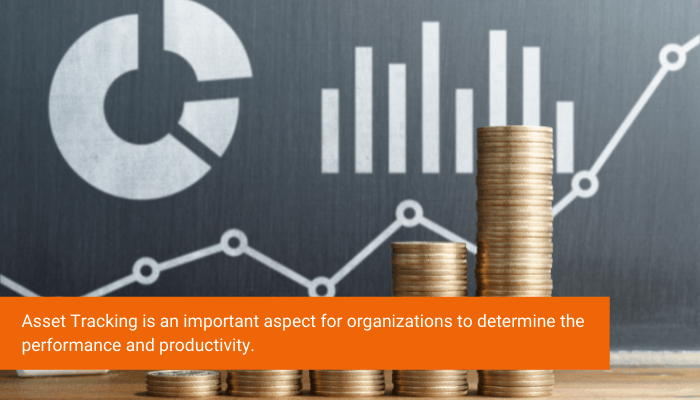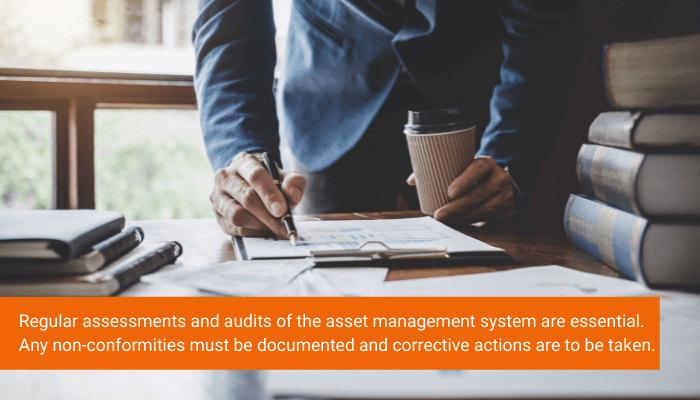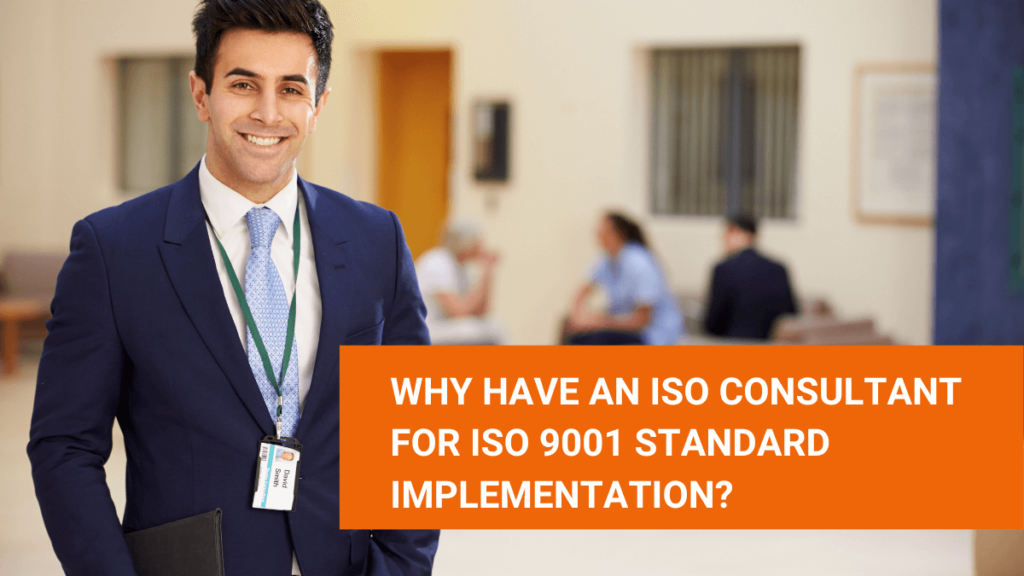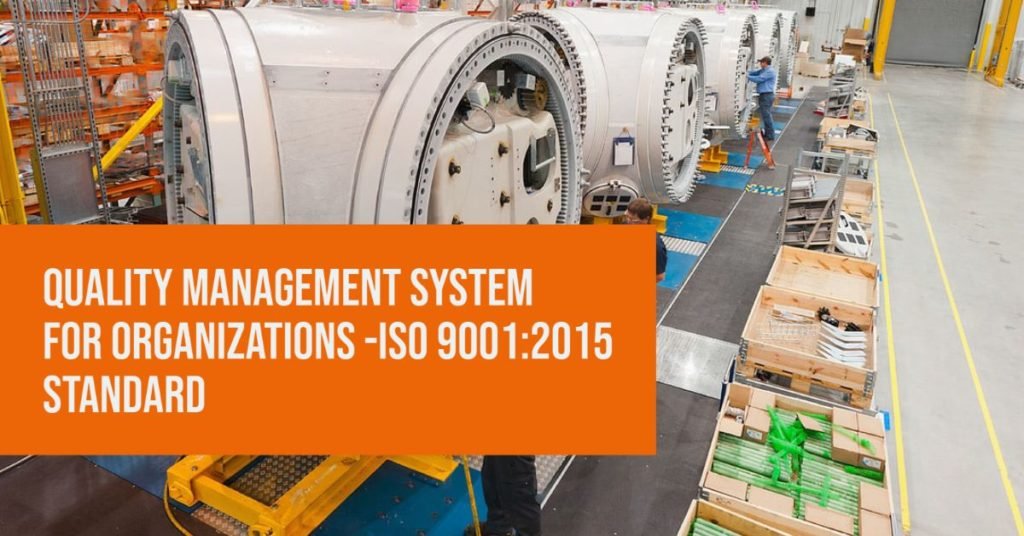ISO 55001:2014 is an Asset Management System Standard that enables companies to get maximum value out of their assets. Implementing ISO 55001:2014, organizations will have better control over daily activities, achieve higher returns with their assets, and reduce the total cost of risk.
The Standard applies to all organizational structures of the company and all types of assets. The framework also supports the continual improvement of performance across the organizations. Companies will gain significant financial benefits from implementing the Asset Management System as it enhances the overall company valuation.
Why Asset Management is Important?
Asset Management helps organizations to save money and time by enhancing resource utilization. Asset Tracking is an important aspect for organizations to determine performance and productivity. The company’s credibility and financial strength will enhance with more performing assets becoming active in the market.

The Asset Management System provides the guidelines to the respective team to use the available assets wisely. The objective of the company is to get the most out of its asset utilization while providing added value to the stakeholders.
Having a proper management system to track the company’s assets is highly beneficial in the overall business growth of the company.
7 Requirements of an Asset Management System
Following are the requirements of an Asset Management System. The organization will benefit greatly by implementing an Asset Management System. There are various factors that affect the success of an Asset Management System implementation.
Organizational teams, top management, and employees at all levels play equal roles in the implementation of the Asset Management System. It involves a lot of strategic planning in aligning the organization’s goals with the Asset Management System.
1. Context of the Organization
The scope and business objectives of the organization must be clear and in line with the Asset Management System. The organization’s stakeholders must have an agreement on the organization’s operations to keep the cost low and assess the performance risks involved in the operations.
The organization must take stock of all its assets and plan to assign them to the right professional team to manage the operations. The implemented Asset Management System will help in further streamlining the asset operations and valuations of the company.
2. Leadership and Top Management Team
The top management must be showing interest in the asset management and valuation of the company’s assets. They must communicate and take stock of the utilized and unused assets. The high-level team works out a plan to ensure the profitability is high all time.
Asset utilization plays a great role in bringing value and revenue to the company. Asset Management System will help in assigning the resources the right way.
3. Strategic Planning
Strategic planning plays a vital role in effective asset management. Conduct the asset allocation in a way it maximizes value for the organization.
There will be multiple assets across geographies and various unused assets that can be of value addition for the company. Strategic planners within the organization must develop pathways to utilize the assets effectively to generate revenue for the company.
4. Support from the Employees
Implementing the Asset Management Plan requires the right level of support. The support comes from the employees, available information, organizational systems, etc.
Cross-functional groups will be of great help to list out the assets and associated valuations. The resources available in both physical and digital formats, across geographies, and multiple locations are to be listed down and assigned to the right team to boost the valuation.
5. Operations
The Asset Management Plan is put to action in full swing. The valuation is calculated from each asset and the performance is measured in this stage. There would be multiple areas of focus for an Asset Management System.

Asset Management System is essential to keep track of numerous projects, risk profiles, etc., and take corrective actions. There would be many activities outsourced, the organization must take stock of all to assess the productivity of the same.
6. Performance Evaluation
Performance Evaluation helps an organization to analyze the efficiency of the Asset Management System. The organizational objective must be met by the asset management system. Top management can use the information from the performance evaluation for deciding asset allocation and utilization.
The Asset Management System provides an overall representation of the available assets and their current status. Depending on the utilization and monetary benefits of the assets listed, the company can get an idea about the financial benefits and future asset growth values.
7. Continuous Improvement
The practice of continuous improvement is highly beneficial for the success of the Asset Management system. Regular assessments and audits of the asset management system are essential. Any non-conformities must be documented and corrective actions are to be taken.
The system checks and audits will provide an option for learning experiences and improving any risk profiles and help in creating an action plan.
Asset Management System and Organizational Benefits in UAE
Asset Management System is an essential component for every organization to gain maximum returns from their assets. UAE is an active business location and there are large and small companies around the UAE operating with their assets dispersed across multiple locations for business.
The Assets include movable items such as vehicle fleet, aircraft, heavy equipment, immovable such as real estate, commercial buildings, and digital intellectual properties, and human resources. Managing these assets effectively will result in expanded business growth for the organization.
ISO 55001:2014 Certification and Asset Management in Organization
Asset Management Certification helps the organization to keep track of their performing and non-performing assets. Organizations can take the required corrective actions to enhance the valuation of the assets.
The ISO 55001:2014 will provide guidelines and a checklist for implementing a robust Asset Management System for the organization. The Asset Management System will enable the organization to follow the best globally accepted practices of organizing, managing, and operation the assets effectively to generate steady revenue for the company.
To know more about ISO 55001: 2014 Asset Management Standard and the implementation process, connect with our expert ISO Consultants right away!
Contact Us: Aurion ISO Consultants



